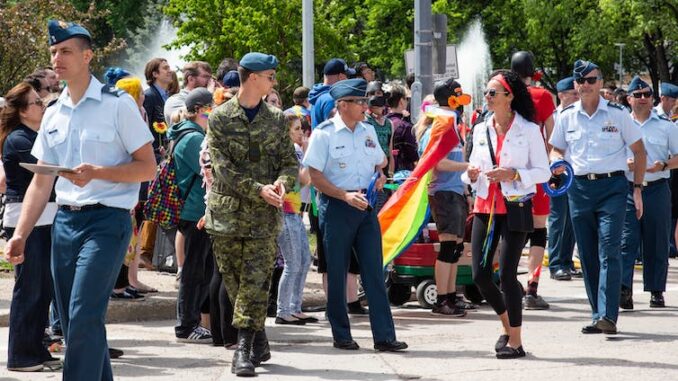
In 1967, Justice Minister Pierre Trudeau famously said, “There’s no place for the state in the bedrooms of the nation.” By 1969, homosexuality had been decriminalized between two consenting adults in Canada.
But there was no change in military policy that reflected these changes in Canadian society. Before integration and unification, regulations differed across the separate services. What was common was that officers were required to act, investigation by the military police or security officials was to occur, there would be a medical examination, potential civil or criminal action taken against the serving member and the subsequent release of those identified as homosexual.
Unification of the Canadian Armed Forces occurred in 1968. And the Canadian Forces Administrative Order (CFAO) 19-20, Sexual Deviation – Investigation, Medical Examination and Disposal was created to continue the practice of removing homosexuals from the CAF despite the new laws regarding consensual relationships. In 1976, CFAO 19-20 was amended and retitled to “Homosexuality – Sexual Abnormality Investigation, Medical Examination and Disposal”. Those who were found to be homosexual were removed from the military (usually with an honorable discharge).
In 1982, the Constitution was repatriated back to Canada and the Canadian Charter of Rights and Freedoms was made into law. Even prior to repatriation, there was discussion of sexual orientation being added to the Canadian Human Rights Act. By 1985, the Parliamentary Committee on Equality Rights released “Equality For All” a report that highlighted the shockingly high rate of discrimination against homosexuals in Canada. The committee recommended that the Canadian Human Rights Act be amended to make it illegal to discriminate on the basis of sexual orientation.
The CAF was singled out for 5 areas where they did not meet the Charter: mandatory retirement ages; physical and medical employment standards; the recognition of common law relationships; the employment of women; and sexual orientation.
In 1988 the CAF released an interim policy amending CFAO 19-20 item 5 (d) indicating members had to consent to their release for homosexuality, but if they stayed in the CAF they would agree to career restrictions including promotion. From the time period of 1988-1992 60 members left the military under this policy.
From 1989 onwards the CAF and Canadian government faced 5 lawsuits from former CAF members who had been released due to homosexuality, most prominently Capt Joshua Haig and 2 Lt Michelle Douglas. In August 6, 1992, Haig and Birch v Canada (Canadian Armed Forces) successfully argued that the omission of sexual orientation from the Canadian Human Rights Act constituted discrimination under the equality right guarantee set out in the Canadian Charter of Rights and Freedoms. The court decided that “sexual orientation” was also part of the Canadian Human Rights Act. Other cases awaiting litigation, such as 2 Lt Michelle Douglas were quietly settled before the court convened on October 27, 1992. On the same day the Chief of Defense Staff stated that “Canadians, regardless of their sexual orientation, will now be able to serve their country…without reservations.” And by December 2, 1992 Canadian Forces Administrative Order (CFAO) 19-20 Homosexuality – Sexual Abnormality Investigation, Medical Examination and Disposal was cancelled.
In 1996, sexual orientation was added formally to the Canadian Human Rights Act under Bill C-33. And in 2017, the Canadian Government formally apologized for the “LGBT Purge” that took place across the CAF, RCMP and Public Service.
Canada ranks as one of the world’s most accepting nations for LGBTQ rights both in public opinion and legally.
Written by: Karen Young, Manager, Military C&E Museum
